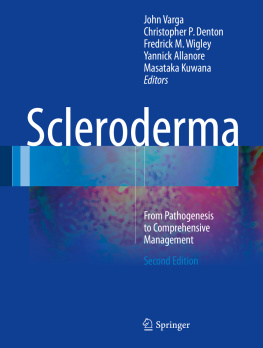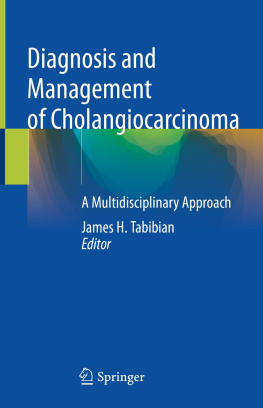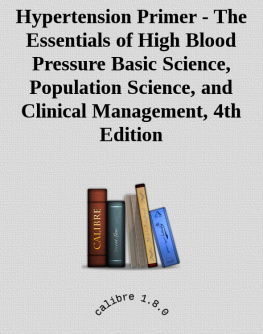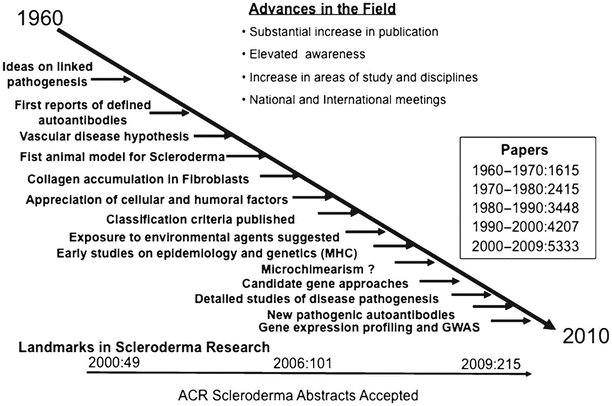Springer Science+Business Media New York 2017
John Varga , Christopher P. Denton , Fredrick M. Wigley , Yannick Allanore and Masataka Kuwana (eds.) Scleroderma 10.1007/978-3-319-31407-5_1
1. Historical Perspective of Scleroderma
In addition to considering how long a distinct medical entity that we would recognise as scleroderma has been recognised it is useful to place the diagnosis and classification of scleroderma in a historical context. It is clear that there was initially some reluctance to group together all forms of the disease that we would recognise today, and this is perhaps reflective of the advances that have occurred in imaging and laboratory investigation and a greater appreciation of the link between different organ-based manifestations. The milestones in the history of scleroderma bear testimony to the gradual realisation of the heterogeneity of the disorder. For a more detailed discussion of the fascinating history of this disease, the reader is referred to the excellent historical review by Rodnan, the father of modern-day clinical scleroderma [].
Early History
It is often considered that the first description of the systemic disease that we recognise as scleroderma was in 1753 by Cario Curzio (Naples, Italy) (Fig. ) provides a potential platform for the development of anti-fibrotic or vascular therapies that could be beneficial in other commoner diseases that are characterised by vascular insufficiency or extracellular matrix overproduction.
Fig. 1.1
Some of the key historic figures who contributed to the field of scleroderma are listed. Appreciation of the severity of the disease was confounded by clinical variability and absence of unifying diagnostic criteria or investigational modalities
Fig. 1.2
The timeline of translational research into scleroderma illustrates the growing interest in the disease together with better appreciation of its complexity and more candidates for pathogenesis
Emergence of Systemic Sclerosis as a Clinical Entity
The appreciation of the spectrum of scleroderma and related disorders over the past 40 years has been a gradual process underpinned by growing expertise in assessment and evaluation of cases and stronger collaboration across medical specialties. This allowed the relationship between systemic sclerosis, localised scleroderma, and other autoimmune rheumatic diseases to become established. Additional recognition of conditions such as eosinophilic fasciitis [] and environmentally triggered diseases fueled clinical research. Finally, appreciation of the relationship between isolated Raynauds phenomenon and evolution into connective tissue disease permitted a broadening of the spectrum to encompass what is currently considered the scleroderma spectrum that is covered in this volume.
Recent History
The late twentieth century was a period of tremendous advance in biomedicine, and this is reflected by the growth in understanding of systemic sclerosis. This has occurred in both appreciation of the underlying pathobiology and also the relationship between clinical manifestations of scleroderma and systemic sclerosis (SSc) and other organ-based forms of fibrosis and vascular disease. In this way, SSc provides a paradigm for other commoner medical conditions, and this has fueled clinical and translational research and helped to support further research.
Advances in Scleroderma Biology
Underpinned by the work of LeRoy and others [], the next generation of researchers has used advances in cell and molecular biology to develop better concepts of pathobiology of SSc that more completely explain the disease. This has most recently included incorporation of genetic and developmental biology, and it is reasonable to assert that models of pathogenesis can now be developed that provide a framework for understanding the disease in its different and diverse forms. Improved outcomes for scleroderma renal crisis emerged in the 1980s, and this provided an important demonstration that SSc was indeed treatable and that outcomes even of the most lethal aspects of the disease could be improved. In a similar time frame, treatments for gastroesophageal disease advanced, with PPIs providing a critical advance in management of upper GI disease. The International Scleroderma Research Workshop was established by Drs. Black and Korn and has provided real stimulus to advance science of SSc and evolve into the area of translational research. This meeting remains preeminent in the field and aims to bring the very best relevant and new science into the arena of scleroderma research.
Progress in Classification Natural History and Clinical Trials Methodology
The past two decades have been a period of clinical progress that has included the development of clinical trials methodology. Important studies have been undertaken; although initially mostly negative these efforts did confirm the feasibility of clinical trials in SSc and led to better understanding of disease natural history. Pooled analysis of these early studies has been essential to better understand trail methods, and this has provided the foundation for current clinical studies. Early templates for trial design were developed and have been updated, and this is exemplified by recent publication of a series of points to consider in scleroderma trials []. As in other branches of medicine, the availability of valid trial templates is critical as potential therapeutic approaches emerge. Appreciation of the need for cohort enrichment and clear definition of endpoints has emerged from expert discussion over the past three decades and represents an important achievement in recent scleroderma history.
Classification of SSc was first attempted in 1980 [].
Important international collaborative groups have emerged including the Scleroderma Clinical Trials Consortium that was established in the 1990s and now have more than 75 member institutions all with a high degree of expertise in clinical research and trails in SSc. This has underpinned recent trials and progress. The first organised group to emerge internationally was the Scleroderma Clinical Trials consortium. This group links expert centres and was set up in the USA but has now become a strong international organisation. More recently the key events internationally have been the establishment of EUSTAR that has developed into an impressive network of scleroderma centres and anchored by a clinical database that is being used for observational clinical research. There are active educational and research programmers, and these are now providing a very powerful research for study and improved understanding of SSc.









